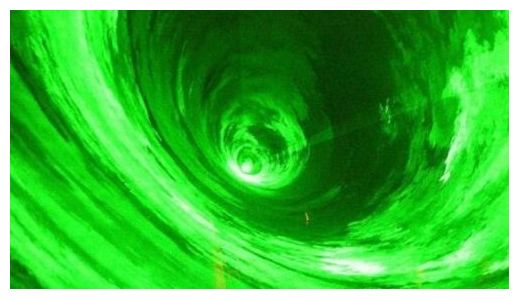
© The Daily Galaxy
A brilliant physicist João Magueijo asks the heretical question: What if the speed of light - now accepted as one of the unchanging foundations of modern physics - were not constant?
"A number of surprising observations made at the threshold of the 21st century have left cosmologists confused and other physicists in doubt over the reliability of cosmology," Magueijo says. "For instance it has been found that the cosmological expansion appears to be accelerating. This is contrary to common sense, as it implies that on large scales gravity is repulsive. Another upheaval resulted from the high redshift mapping of the fine structure constant. Evidence was found for a time dependence of this supposed constant of Nature. Yet another puzzle was the observation of rare very high energy cosmic rays. Standard kinematic calculations, based on special relativity, predict a cut off well below the observed energies, so this may perhaps represent the first experimental mishap of special relativity.
"These three surprises are not alone and prompt several questions. Is the Universe trying to tell us something radical about the foundations of physics?" he continues. "Or are astronomers merely trying to irritate the conservative physicist? It could well be that the strange observations emerging from the new cosmology are correct, and that they provide a unique window into dramatically novel physics. Is the Universe trying to give us a physics lesson?"
Magueijo, a 40-year old native of Portugal, puts forth the heretical idea that in the very early days of the universe light traveled faster - an idea that if proven could dethrone Einstein and forever change our understanding of the universe. He is a pioneer of the varying speed of light (VSL) theory of cosmology -an alternative to the more mainstream theory of cosmic inflation- which proposes that the speed of light in the early universe was of 60 orders of magnitude faster than its present value.
Solving the most intractable problems of cosmology in one brilliant leap, Magueijo's varying-speed-of-light theory (VSL) would have stunning implications for space travel, black holes, time dilation, and string theory - and could help uncover the grand unified theory that ultimately eluded Einstein.
Joao Magueijo's radical ideas intend to turn that Einsteinian dogma on its head. Marueijo is trying to pick apart one of Einstein's most impenetrable tenets, the constancy of the speed of light. This idea of a constant speed (about 3×106 meters/second) is known as the universal speed limit. Nothing can, has, or ever will travel faster than light.
Magueijo -who received his doctorate from Cambridge, has been a faculty member at Princeton and Cambridge, and is currently a professor at Imperial College, London- says: not so. His VSL theory presupposes a speed of light that can be energy or time-space dependent.
In his first book,
Faster than the Speed of Light, Magueijo leads laymen readers into the abstract realm of theoretical physics, based on several well known, as well as obscure, thinkers. The VSL model was first proposed by John Moffat, a Canadian scientist, in 1992. Magueijo carefully builds the foundations for a discussion of Big Bang cosmology, and then segues into the second half of the book, which is devoted to VSL theory.
Like most radical, potentially seminal thinkers, Magueijo shakes the foundations of the physics community, while irritating off many of his fellow scientists. VSL purposes to solve the problems at which all cosmologists are forever scratching: those inscrutable conceptual puzzles that surround the Big Bang. Currently many of these problems have no widely accepted solutions.
Could Einstein be wrong and Magueijo right? Is he a gadfly or a true, seminal genius? Time will tell.
Joao Magueijo concludes: "One dramatic possibility is that the speed of light is a dynamic variable. If so we may indeed expect the above phenomena to be true. In addition, it could be that near black holes the speed of light congeals to zero, preventing observers from approaching the ''singularity'' and invalidating most current black hole theories. It might also be true that in the vicinity of cosmic strings the speed of light is much higher, allowing for high-speed travel without the annoyances associated with time dilation effects. Yet another possibility is that time variations in c cause the energy stored in the cosmological constant to be converted into normal matter. This process might even account for the creation of the Universe. Or perhaps something even more unpalatable to the unimaginative physicist is behind our existence.
"The amazing possibility remains that these radically new phenomena may also manifest themselves here and now, not just in the very early Universe. Maybe we have only recently started to look hard enough. Crazy as all of these ideas might be, some may already make contact with observations, unlike more conventional approaches to unification and quantization of gravity. For this reason I will argue that these off-the-mainstream "cosmic lessons" may provide the much sought after observational inspiration for such long standing unsolved problems as the quantization of gravity."
"varying speed of light (VSL) ... proposes that the speed of light in the early universe was of 60 orders of magnitude faster than its present value."